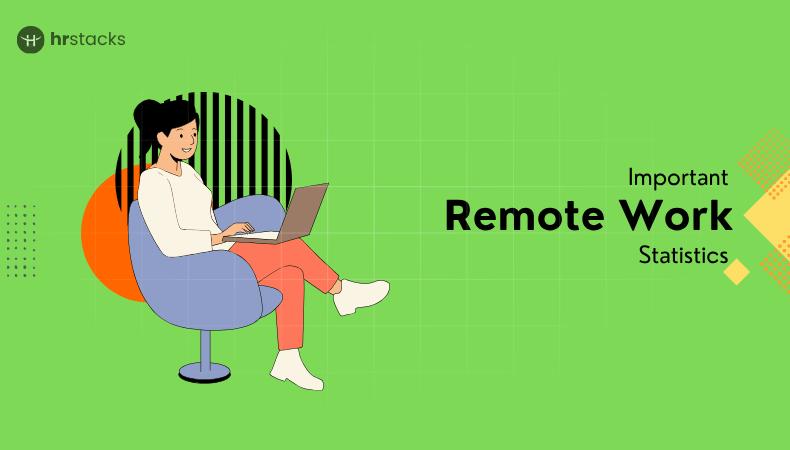HR teams often find themselves buried under repetitive tasks, such as screening resumes, managing onboarding paperwork, and processing payroll, which takes away the time that could be better spent on strategic initiatives.
That’s where workflow automation comes in. By streamlining routine HR processes, automation not only frees up valuable hours but also improves accuracy, consistency, and the overall employee experience.
By deploying well-designed automated workflows, organizations consistently cut administrative burdens, accelerate response times, and improve compliance.
Whether you’re streamlining an SMB’s onboarding process or orchestrating enterprise-scale payroll, this guide equips you to make informed, time-saving choices.
In this guide, we’ll break down what HR workflow automation really means, how it helps, and which tools and strategies can make the biggest impact
What Is HR Workflow Automation?
HR workflow automation streamlines recurring HR tasks, such as onboarding, leave requests, payroll, performance reviews, and document management, by using software to manage the flow of data, approvals, and notifications across systems and people.
Instead of manually forwarding emails and tracking signatures, an automated workflow triggers each step automatically: a hiring event can prompt offer letters, IT account creation, training assignments, and onboarding checklists, all without human intervention.
Why It Matters?
HR workflow automation makes a real difference because it frees HR teams from repetitive administrative work by saving time, reducing errors, improving compliance, and allowing them to focus on strategic, value-driven activities like employee engagement and development.
- Time Savings: Automation can reduce HR effort on onboarding and administrative tasks by 30–50%, letting teams reallocate hours to strategic initiatives.
- Improved Accuracy & Compliance: Workflows enforce standardized forms and approval steps, minimizing data-entry errors and enhancing auditability.
- Enhanced Employee Experience: Faster, consistent onboarding, approval transparency, and proactive communications improve satisfaction.
- Strategic Alignment: With efficiency on repeat processes, HR can scale consultative efforts and talent development more effectively.
- Scalability: Automation supports organizational growth, handling seasonal peaks and cross-border operations with ease.
Key Selection Criteria
Choosing the right HR automation tool starts with identifying your pain points, whether it’s streamlining recruitment, payroll, onboarding, or compliance, and ensuring the tool aligns with your specific needs.
You’ll also want to assess ease of use, setup time, integration capabilities with your existing tech stack, and whether the vendor supports scalability, strong security/compliance, and reliable training or support.
- Functionality Fit – Ensure the tool supports critical workflows your team uses most (e.g., employee onboarding, leave approvals, payroll, IT provisioning), avoiding ones that only partially automate or require workarounds .
- Ease of Use & Setup Time – Look for intuitive, no-code or low-code interfaces that enable HR professionals to configure workflows and make modifications without relying heavily on IT or consultants.
- Integration & Ecosystem Compatibility – Choose platforms that seamlessly tie into your existing HR tech stack (ATS, benefits systems, communication tools, payroll, IT ticketing), enabling data flow and cross-system notifications.
- Scalability & Compliance – Verify that the solution can handle your team’s projected growth, support multi-country regulations, data privacy standards (GDPR, CCPA, etc.), and accommodate evolving workflows.
- Support & Total Cost of Ownership (TCO) – Factor in licensing costs against expected time savings, and evaluate vendor support, training resources, and community backing to ensure successful long-term adoption.
Top HR Automation Tools That You May Use
As HR technology evolves, there is a balanced mix of tools tailored to every organization, from all-in-one platforms like Bitrix24 and Rippling to specialist solutions such as BambooHR and Kissflow.
These are complemented by flexible connectors like Zapier, which bridge systems without coding. In the lines that follow, you’ll find a detailed exploration of each tool’s core strengths, ideal use cases, and the specific efficiencies they can deliver.
HR automation software comparison
| Tool | Best For | Key Features | Time Saved |
|---|---|---|---|
| BambooHR | SMBs with growth aspirations | Onboarding checklists, PTO tracking, e-signatures, performance reviews | 30–50% |
| Rippling | HR + IT onboarding | Device setup, app provisioning, payroll & benefits automation | Days to minutes |
| Bitrix24 | Unified HR, CRM, and project workflows | Leave approvals, attendance, payroll, CRM, task automation | 25–40% |
| Workday | Large, global enterprises | AI recruiting agents, payroll, compliance automation, dashboards | Weeks to hours |
| Zoho People | Budget-conscious SMBs | Workflow triggers, attendance, chatbot assistant, shift planning | High reduction in manual HR tasks |
| Kissflow | Flexible, non-technical automation | Drag-and-drop workflow builder, onboarding, reimbursements | Days instead of months |
| Zapier | Integrations without engineering | Connects apps like Slack, Gmail, BambooHR; no-code triggers | Instant notifications & task syncs |
| Gusto | Small businesses | Payroll, tax filing, onboarding, self-serve benefits | 90%+ onboarding & payroll automated |
| HiBob (Bob) | Mid-sized companies focused on people ops | Onboarding, engagement workflows, Slack/ATS integrations | Onboarding reduced from 5+ to 2 days |
| Freshteam | Recruitment automation | Interview scheduling, onboarding, ATS, employee records | 30–50% hiring coordination time saved |
| Deel | Global remote teams | Global payroll, compliant onboarding, tax docs, equipment provisioning | 2 weeks to 2–3 days |
Rippling
Rippling brings HR, IT, and finance together into a single system. Its standout feature is automated provisioning—when you hire someone, Rippling instantly sets up their payroll, benefits, software apps, and even devices without IT lift.
Best for: HR + IT onboarding
- Pros: Automates access provisioning, including hardware, software, payroll, and benefits from a single employee profile.
- Time Saved: IT provisioning reduced from days to minutes for most users.

BambooHR
BambooHR streamlines onboarding with customizable checklists and electronic signatures, helping companies significantly shorten time‑to‑productivity for new hires.
Best for: SMBs with growth aspirations
- Pros: Clean, user-friendly interface; features include onboarding checklists, electronic signatures, PTO tracking, and performance modules.
- Time Saved: Dramatic efficiency gains, especially in onboarding and performance-cycle setup.

HiBob (Bob)
HiBob is a people management platform built for modern, mid-sized companies. It goes beyond core HR by focusing on culture, engagement, and data-driven automation, ideal for teams scaling fast and looking to personalize HR workflows.
Best for: Mid-sized companies focused on engagement and people workflows
- Pros: Offers automation across onboarding, performance cycles, and engagement surveys. Integrates with Slack, Jira, and ATS platforms.
- Time Saved: Reduces onboarding setup from 5+ days to under 2 days through automation.

Deel
Deel is a global HR and compliance platform designed to help companies onboard, pay, and manage remote employees and contractors in 100+ countries. Its automated workflows handle contracts, payroll, tax documentation, and equipment setup with compliance built-in.
Best for: Global teams managing remote employee and contractor onboarding
- Pros: Automates compliant onboarding, contract creation, and payroll in over 100 countries. Includes workflows for tax documentation, benefits selection, and equipment provisioning.
- Time Saved: Reduces global onboarding time from 2 weeks to 2–3 days.

Gusto
Gusto is a modern payroll and HR platform tailored for small businesses. It automates everything from employee onboarding and direct deposits to tax filings and benefits enrollment, helping lean teams stay compliant without extra admin effort.
Best for: Small businesses needing automated payroll and onboarding.
- Pros: Combines payroll, benefits, onboarding, and compliance in a simple interface. Automates new hire setup, tax filings, and direct deposit. Offers self-serve onboarding portals for employees.
- Time Saved: Automates up to 90% of payroll and onboarding steps for small teams.

Bitrix24
Bitrix24 offers a powerful all‑in‑one platform that lets HR, CRM, and project teams build tailored workflows, such as onboarding triggers and approval chains, saving up to 40% on administrative tasks.
Best for: Unified HR, project, and CRM workflows
- Pros: Combines HRMS, CRM, project management, time-tracking & recruiting into a single platform. Automates leave approvals, attendance, and payroll notifications.
- Time Saved: Fewer app silos, users report saving 25–40% of admin time.

Workday
Workday is a leading enterprise-grade platform offering HR, finance, and planning tools designed for complex, global operations. Its AI-powered automation, including “Recruiter Agents” and real-time payroll workflows, helps large organizations significantly cut down manual HR work.
Best for: Large, global enterprises.
- Pros: Enterprise-grade HR, finance, and planning automation powered by AI. Customizable dashboards, audit trails, and compliance-ready features. Recent “Recruiter Agents” automate job posting and interview scheduling.
- Time Saved: Reduces global payroll cycles from weeks to hours and automates complex cross-region workflows.

Zoho People
Zoho People is part of the broader Zoho suite and offers robust HR functionality at a competitive price. It features built-in workflow automation, shift scheduling, and an AI assistant called Zia that handles tasks like leave approvals and reminders.
Best for: Budget-conscious, feature-rich SMBs
- Pros: Offers workflow automation, leave/attendance, shift planning, and chatbot assistant “Zia.”
- Time Saved: Automates routine approvals and attendance alerts, reducing HR overhead significantly.

Kissflow HR Cloud
Kissflow is a no-code platform that empowers HR teams to design and automate workflows without technical help. Its drag-and-drop builder makes it easy to launch custom workflows, from onboarding to reimbursements, within days.
Best for: Organizations needing flexible automation
- Pros: Visual, drag-and-drop builder, design HR processes like onboarding, leaves, reimbursements, and performance cycles.
- Time Saved: Processes built and live in days, not months.

Zapier
Zapier isn’t an HR tool per se, but it’s incredibly valuable for teams looking to connect their existing HR stack. It acts as a no-code automation layer between apps like BambooHR, Gmail, and Slack, triggering actions without writing a line of code.
Best for: Integration without engineering.
- Pros: Connects BambooHR, Slack, Gmail, Google Sheets, and similar tools, ideal for adding automation to an existing stack.
- Time Saved: Automates data transfers and notifications, replacing manual labor with instant updates.

Emerging Trends: AI & Generative Automation
AI is transforming HR from a task-handling function into a strategic, people-centered powerhouse. Generative AI tools, powered by natural language models, are automating resume screening, job-description drafting, interview scheduling, and onboarding conversations.
Meanwhile, intelligent AI agents are emerging to autonomously manage routine HR workflows like answering payroll queries or guiding employees through benefits enrollment.
Predictive analytics play a growing role, too, flagging potential turnover, skill gaps, and compliance risks well before they escalate. Yet there’s a balance to maintain: robust ethical oversight, transparent AI policies, and ongoing human validation are essential to ensure fairness, trust, and privacy.
Collectively, these approaches from chatbots and agents to analytics are enabling HR teams to operate more efficiently while providing personalized, proactive support at scale.
Implementation Roadmap
Successfully automating HR workflows begins with understanding existing processes, setting clear goals, and identifying repetitive tasks suitable for automation, a strategy backed by best practices across organizations.
From there, implementing in phases, starting with a pilot, mapping workflows, configuring tools, and training stakeholders, sets the foundation for scalable deployment and continuous improvement.
A thoughtful implementation plan ensures maximum ROI and smooth adoption:
- Understand Current Workflows: Begin by mapping how HR processes currently operate onboarding, leave management, and payroll through process charts and stakeholder input. Involve both HR and IT to uncover bottlenecks and repetitive tasks.
- Define Clear Objectives & KPIs: Outline what success looks like—faster onboarding, fewer errors, increased satisfaction. Set SMART goals like “cut payroll processing time by 50% in 6 months,”.
- Choose & Pilot the Right Tools: Evaluate platforms based on your defined needs, ease of use, integrations, scalability, and compliance. Run a small-scale pilot involving diverse user groups to validate workflows.
- Customize, Integrate & Migrate: Configure workflow logic, permission roles, and UI; integrate with payroll, ATS, IT ticketing, and related systems; then securely migrate data, auditing for accuracy.
- Train & Roll Out: Provide phased training with champions in each department; use walkthroughs, documentation, and open communication to drive adoption.
- Monitor, Iterate & Scale: Track KPIs like process cycle time, error rates, and system usage. Collect feedback during the pilot and rollout, then tweak workflows before expanding to other HR areas.
Measuring Impact
It’s essential to establish clear metrics that reflect real-world value, such as time saved, error reduction, cost efficiency, and employee satisfaction.
Organizations like Automata Industries and MediHealth have reported 20–30% reductions in administrative hours and notable gains in staff productivity after introducing HR automation.
By tracking KPIs like onboarding time, error rate, and ROI both before and after implementation, you can quantify success, guide future investments, and build stakeholder trust.
A few key KPIs to track:
| KPI | Before | After | Impact |
| Time-to-Onboard (days) | 7 | 3 | ↓57% |
| Leave Approval Lead Time (hrs) | 48 | <4 | ↓92% |
| Payroll Cycle Processing (hrs) | 16 | 4 | ↓75% |
| HR FTE Hours Saved / Month | 80 | 200+ | +125% |
| Employee Satisfaction Score | 3.8/5 | 4.5+/5 | +18% |
Consistent monitoring helps justify ongoing investment and surface new areas for automation.
Conclusion
HR workflow automation has shifted from optional to indispensable. Whether you run a growing SMB or a global enterprise, platforms like BambooHR, Zoho People, Kissflow, Workday, and Bitrix24 deliver tangible time savings, enhanced accuracy, and scalability.
AI and intelligent agents, from chatbot assistants to smart scheduling bots, now further accelerate processes such as onboarding, ticket resolution, and payroll reviews, turning days into hours of work saved.
To get started, evaluate which HR processes matter most to your team and pick tools aligned with your scope and organizational maturity. Launch a small pilot with clear performance metrics, and use the results to refine and scale your automation.
As AI becomes core to HR systems, layering in generative and predictive tools over time will deepen efficiency and employee experience, making your investment both strategic and future-ready.










